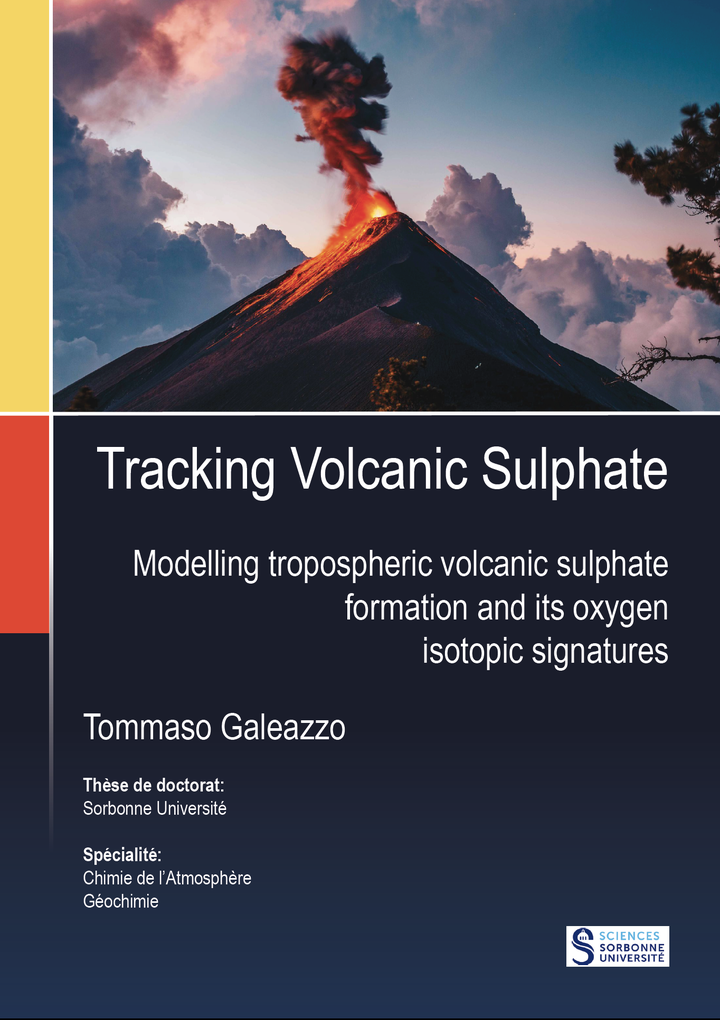Tracking Volcanic Sulphate: modelling tropospheric volcanic sulphate formation and its oxygen isotopic signatures
 Front cover image credits: Angel Borrayo - Fuego Volcano, Guatemala 2017
Front cover image credits: Angel Borrayo - Fuego Volcano, Guatemala 2017Abstract
Volcanic emissions are a major source of sulphur. Volcanic sulphur is oxidized and forms sulphate aerosols that influence the climate by absorbing and dispersing incident solar radiation. Sulphur emissions in the troposphere influence local and regional climate, but large uncertainties remain regarding oxidation and its conversion into volcanic sulphate aerosols. The oxidation of sulphur in a wide range of volcanic plumes and the influence of volcanic halogens on plume chemistry are studied using a chemical box model. At the same time, the isotopic oxygen composition of volcanic sulphate, namely the excess of $^{17}$O (∆$^{17}$O), is being explored, which can provide constraints on sulphur oxidation pathways. The results suggest that in the presence of water droplets and ash, the oxidation of sulphur in plumes is mainly due to aqueous phase oxidation with O$_2$ catalyzed by transition metal ions (TMI). Halogen emissions promote the domi- nance of O$_2$/TMI by inducing ozone depletion events (ODEs). In the absence of water droplets, plume chemistry is largely determined by heterogeneous chemistry on primary sulphate aerosols. The dominant oxidants in these plumes are OH and H$_2$O$_2$. The oxidation rate of sulphur is significantly reduced compared to plumes containing water droplets. The results show that oxygen isotopes in sulphates provide strong constraints on the chemical balance of sulphur in volcanic plumes and on the role of volcanic halogens.